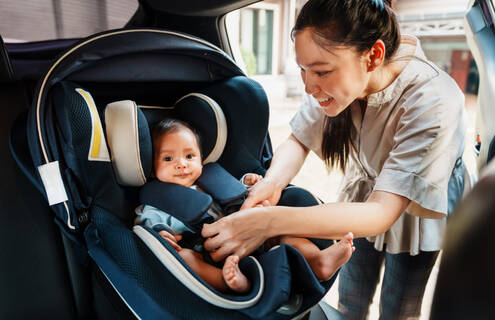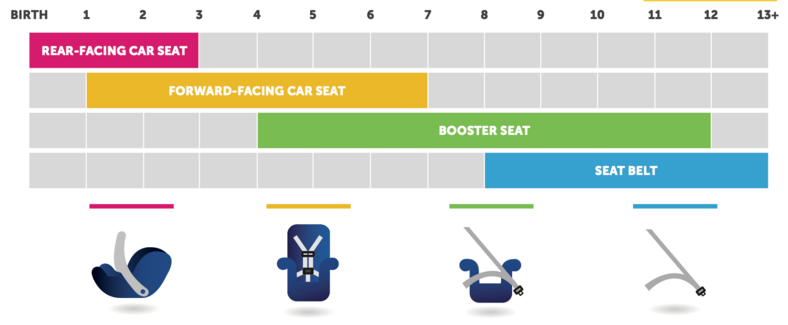
Auto accidents are one of the leading causes of death for children ages 1 to 13 years in the United States.
What makes this fact more tragic is that many of those deaths could have been prevented with the proper use of a car seat. Research shows that children are between 54% (toddlers) and 71% (infants) less likely to sustain a fatal injury (PDF) if they're secured in a properly installed car seat. It also shows that nearly 60% of car seats are installed or adjusted incorrectly (PDF).
That is why it is so important to choose and use the right car seat correctly every time your child is in the car. As your child grows, what type of car seat they need will change. Make sure you use a car seat that fits your child’s current size and age. This information will be included in each seat’s instruction manual and found on a label on the seat.
Here is a look at the different types and when they should be used.
Age by years
Rear-facing car seat (ages birth to 3 years)
The best seat for infants and young children, rear-facing car seats have a harness that, in a crash, cradles and moves with your child to reduce the stress to the child's fragile neck and spinal cord. Your child should remain in a rear-facing car seat until he or she reaches the top height or weight limit allowed by the car seat manufacturer.
Forward-facing car seat (ages 3 to 7 years)
This style of seat has a harness and tether that limits the movement of your child’s body and head in the event of a crash. Your child should remain in a forward-facing car seat until he or she reaches the top height or weight limit allowed by the car seat manufacturer.
Booster seat (ages 7 to 12 years)
Available with or without a back, booster seats elevate your child up so the vehicle’s lap-and-shoulder belt fits properly across your child’s hips and across the chest.
Seat belt (ages 8+ years)
Once your child has outgrown their booster seat (check the seat for height and weight guidance), they can transition to using a seat belt. The belt should lie across the upper thighs and be snug across the shoulder and chest to restrain your child safely in a crash. It should not rest on the stomach area or across the neck or face.
It is important to note that if a car seat is not installed or fitted correctly, your child’s safety could be compromised. If you have questions, trained professionals can help. Car seat assistance stations in our area are listed below. Or call the Department of Transportation Vehicle Safety Hotline at 888-327-4236. View how-to videos from the NHTSA.
Car seat assistance stations
Vermont
Deerfield Valley Rescue Squad
- 22 Stowe Hill Road
Wilmington - 802-446-5557
- By appointment
Manchester Police Department
- 60 Jeff Williams Way
Manchester - 802-362-2022
- By appointment Tuesdays, 5 to 6 pm
Sunrise Family Resource Center
- 238 Union Street
Bennington - 802-442-0059
- By appointment
Massachusetts
North Adams Police Department
- 11 Summer Street
North Adams - 413-664-4944
- By appointment
Adams Police Department
- 4 School Street
Adams - 413-743-1212
- By appointment
New York
City of Troy Police Department
- 55 State Street
Troy - 518-270-4689
- By appointment
Deborah Yanke, LNA, is a member of the Women's and Children's Services team at Southwestern Vermont Medical Center as well as a certified car seat technician.
